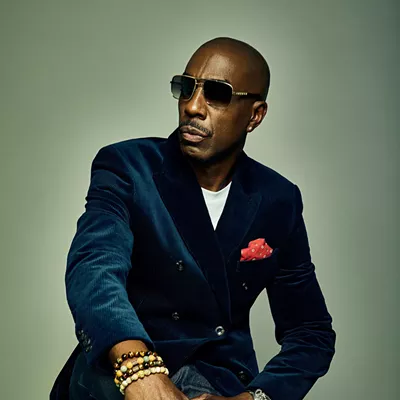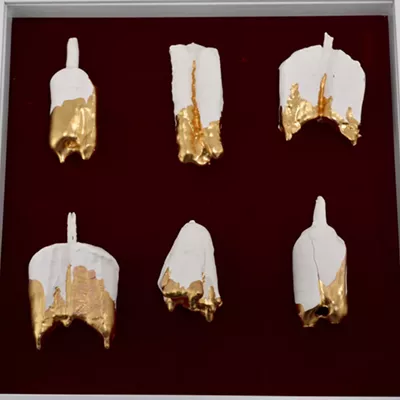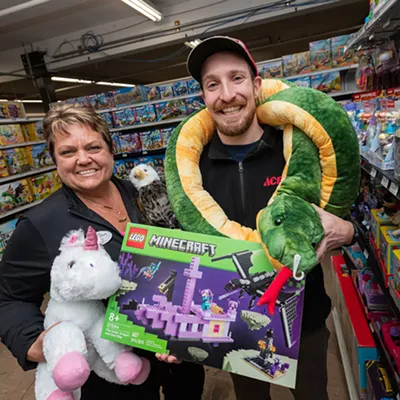The beloved holiday film It’s a Wonderful Life (1946) began its own life in 1943 as a short story titled “The Greatest Gift.” In 1986, there was a rocky attempt to transpose its tale of goodwill trumping adversity to another medium, that time as a musical. More recently, playwright Joe Landry penned a different stage adaptation.
Landry’s version is actually two adaptations in one — a dramatic rendering of It’s a Wonderful Life as though it were being presented as a radio play. Instead of, say, Todd Kehne playing good-natured George Bailey, here we have Kehne playing Jake Laurents, who voices Bailey. This means there are two narrative layers: the audible, which tells a story reminding us not to take life for granted, and the visible, which tells the story of the actors performing it.
This “layeredness” could easily be contrived or messy, but in practice it complements the heartwarming story it envelops. It functions in the same way as misdirection, a tool of the magician’s trade. We’re disarmed by a false sense of candor. We see the tricks behind the sound effects — the clop of heels (shoes on hands), howling wind (fabric over a rotating drum), a fork and plate replicating the clink of silverware on china — and the actors donning different hats to suit their characters, and it’s as if, by pulling back the curtain on one story, we forget we’re in the midst of another.
So as the audience listens to George Bailey grow up, fall in love with Mary Hatch (voiced by Bethany Hart), take over his father’s building and loan, contemplate suicide over the loss of $8,000 and, ultimately, be guided back to gratitude by his bumbling guardian angel, Clarence (voiced by Patrick Treadway), we begin to take the performance of that performance at face value.
Before long, we’ve lost ourselves. We’re a radio audience, it’s Christmas Eve and the year is 1946. The silhouette of Harry Heywood (Treadway) seducing Lana Sherwood (Tamara Schupman) behind the frosted glass door is happening in real time. The romance between Laurents and Sally Applewhite (Hart) is subtly igniting before us. When the “Applause” sign flashes, we’re clapping for the folks listening at home. And though the harmonized advertisements for hair tonic and soap are tongue-in-cheek, their quaint boasts are also somehow plausible.
Treadway’s Clarence, Jerry Sciarrio’s arch-villain Mr. Potter, and Schupman’s Violet Bick hit the sweet spot between individualization and impersonation. Hart doesn’t aim for Donna Reed and is all the better for it; from time to time Kehne’s George Bailey sounds only like an approximation of Jimmy Stewart. Jeffrey Sanders (previously Brother Olf in Incorruptible) directs in a way that doesn’t totally ham up the sight gags or melodramatize the romance, which would have distracted from the radio play and spoiled the illusion.
The litmus test for any retelling of It’s a Wonderful Life, regardless of medium, is whether you walk away with a tear in your eye and the renewed zeal of its protagonist in your heart. On that basis, this Interplayers production is a resounding success.
It’s a Wonderful Life: A Live Radio Play • Through Dec. 30 • Wed-Sat at 7:30 pm, Sat-Sun at 2 pm • Interplayers • 174 S Howard St. • $28 ($22 senior/military, $15 student) • interplayerstheatre.org • (509) 455-7529



















